Linkfest #40: "Microlightning", Quantum Navigation, and There Is Water At The Bottom Of The Ocean
Hail!
It’s time for "the opposite of doomscrolling” — my next Linkfest, in which I offer up the finest items of science, culture and technology that I could snip from the endless and infinite stock-ticker of the Internet.
If you’re a subscriber, thank you! If not, you can sign up here — it’s a Guardian-style, pay-whatevs-you-want affair; the folks who kick in help keep the Linkfest free for everyone else.
And: Please share this email with anyone who'd enjoy it.
Let’s begin ...
1) 🪐 NASA’s exoplanet travel posters
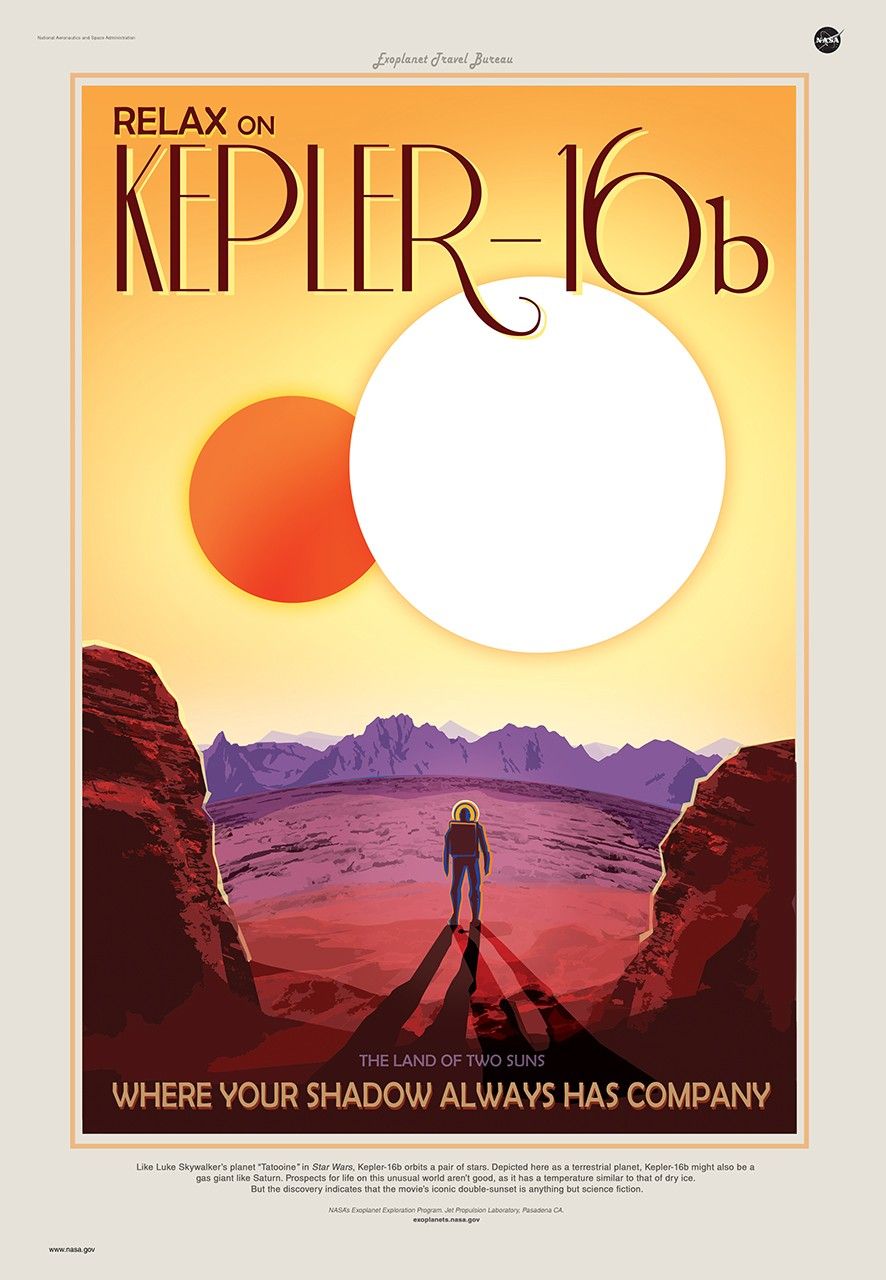
Want to travel to an exoplanet?
NASA has identified over 6,000 exoplanets, and to promote these cool discoveries, they’ve created an “Exoplanet Travel Bureau” that describes what it’d be like to visit some of them. For seven of the exoplanets, they had their in-house graphic designers produce a set of gorgeous, retro-styled posters.
Even the closest exoplanets are too far away to visit. But …
… what if they weren’t?
We worked with NASA scientists, futurists, and artists to imagine exoplanet tourism. From nearly 6,000 confirmed exoplanets, our experts have selected seven dream destinations for discerning travelers.
For each planet you can click through to an audio guided tour. That poster above is for Kepler 16-B, a gas giant that orbits two stars: “Where Your Shadow Always Has Company”. Internally, NASA has nicknamed it “Tatooine”, LOL.
And hey: Since everything NASA makes is in the public domain, you can download the poster images in high-res and print one up!
2) 🎶 Music played by manipulating old reel-to-reel tape recorders
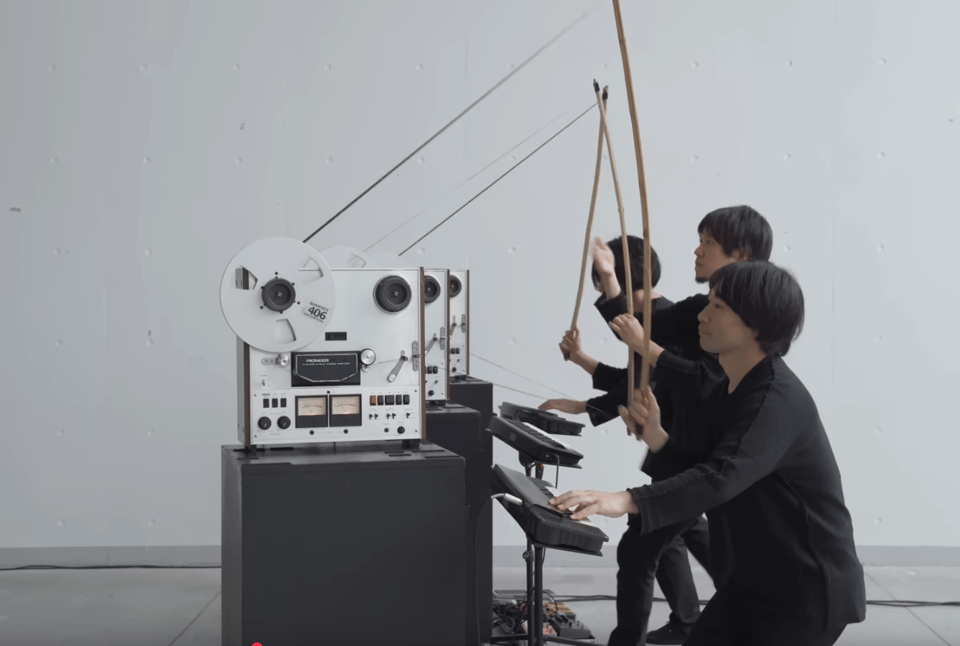
Behold the “Open Reel Ensemble”, a group in which the members play music by stringing pieces of magnetic reel-to-reel tape on bows, then whipping them back and forth through old-school recording machines.
Open Reel Ensemble is a music group which plays old reel-to-reel tape recorders as musical instruments. They are delusional about the ”Magnetikpunk world” where magnetic technology has developed beyond the realm of reality, and play reel-to-reel tape recorders as “magnetic folklore instruments."
That piece above, viewable on YouTube, gives you a taste of what it sounds and looks like: When you speed up and slow down magnetic tape, it produces wonderfully wobbly, organic music. It reminds me of phaser effects that early-era record-producers accomplished in the studio, by doing little warbly realtime adjustments to the tape as it recorded or played back.
They have a bunch of albums on Bandcamp!
3) 🃏 Inside a multi-million-dollar Pokemon card scam
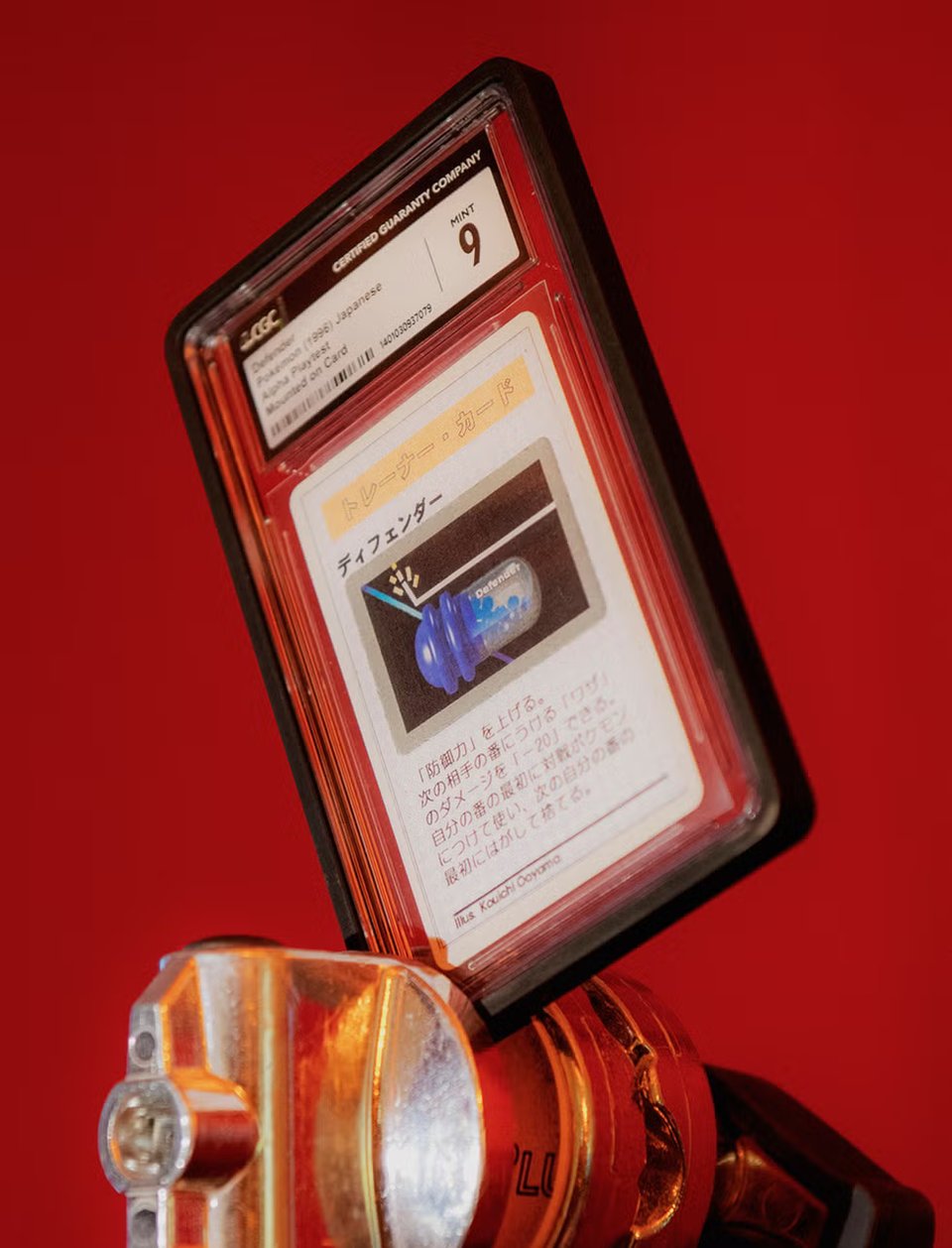
Pokemon trading cards first emerged in 1999, and these days, collectors will pay big money for them. If you’ve got a mint condition Charizard from 1999? It’s easily worth $220,000.
In the spring of 2022, the Pokemon scene erupted with the news that collectibles even more rare had dropped. Takumi Akabane — who worked on the original Pokemon cards — announced that he was selling cards the designers had made to playtest the game. These were raw prototypes, printed out in paper and glued to cardstock; archival gold! When they went on sale, collectors spent as much as half a million to get their hands on some.
But soon things got suspicious. More and more playtest cards went on the market — so many, in fact, that collectors began wondering, how is it possible the designers created this many playtest cards?
As it turns out, many were fake. The scheme unraveled when a suspicious collector began investigating the tiny yellow “machine identification dots” on the cards. They’re a little pattern that printers put into every color print, to identify the printer and thus discourage the counterfeiting of currency. Crucially, the patterns also indicate when the print was made.
When the collector peered at the patterns in cards he’d bought, he discovered they were printed in 2024. Frauds!
The details of his detective work are fascinating. The patterns from Xerox printers were easy to detect, but Kinolta was hard …
If he could decode that pattern, he knew he could determine the provenance of the bulk of the cards. He found a few published papers that looked at various printer dot patterns, but they mostly relied on an EFF dataset released in 2005—essentially a group of sheets people printed at home and sent to the EFF to be scanned in high resolution.
By comparing the variations across sheets, Mastromatteo realized he could deduce the meaning of the pattern. For example, a set of dots on the Xerox pattern encodes the printer’s serial number, which is constant across the same printer. But the dots revealing time and date obviously vary. The published papers suggested that each dot in the Konica Minolta pattern encodes a number from 0 to 5. He harvested scanned printer data produced by the EFF, dot-pattern examples published in papers, some printed pages that had been sent to him, and a couple he printed himself. He then wrote a small script that let him manually input the dot pattern grid and save it as a binary matrix in a text file.
“In the end,” he says, “I was able to find three dots that, when combined, produce a number that is near perfectly correlated with the release date of each printer model.” He interpreted that to be an identification code for an internal printing component. This allowed him to refer back to a sequence of three dots on the playtest cards he examined and determine that the printer was manufactured in 2016—two decades after the prototypes were supposedly created.
This is from a David Howard feature in Popular Mechanics. Go check out the whole thing — it’s a really absorbing crime story.
4) 🌙 Your name spelt out in moon features

The UI/UX expert David Charney has created “Alphabet Moon”, a web site where you can type in any word and it will spell it out via a series of photos of lunar features that are shaped like each letter.
Above is my name, “Clive”!
Alphabet Moon will also tell you the details behind each lunar feature. The letter “C” in my name, for example:
Visible from Earth, a giant 'C' is formed by Sinus Iridum, or the 'Bay of Rainbows. This dark, 236 km (147 miles) wide bay is a plain of ancient lava. The distinctive 'C' shape is formed by the Jura Mountains, a massive mountain range that curves around the bay's edge, leaving one side open to the vast Mare Imbrium. This mountain range is actually what's left of the original crater rim that was flooded by lava long ago.
Super fun!
5) ✏️ Ralph Nader is wrong about pencil erasers
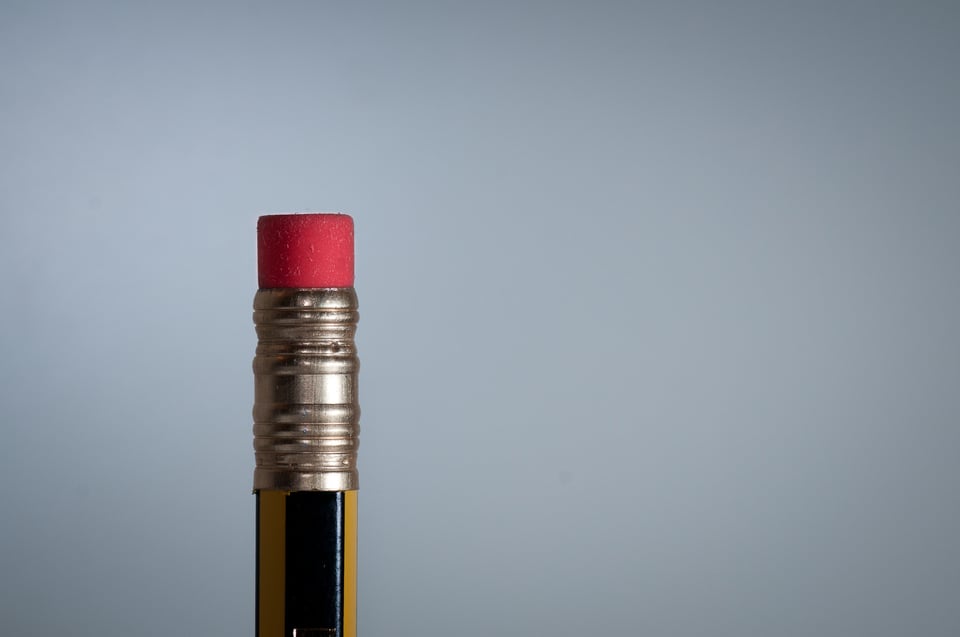
Ralph Nader has been complaining for years that the erasers on the ends of American pencils have been getting worse. Specifically, he finds that they go hard too quickly:
“Before you use a third of it, over time the eraser goes hard on you. Not only is it useless, it smudges and backfires,” as he told Annemarie Conte of The Wirecutter.
So Conte decided to investigate, by doing a deep dive into the history of pencil erasers. And she discovered that Nader’s complaint is off-base. Old-fashioned pencil erasers were made of rubber, which is lovely and soft but gets worn down very quickly; modern erasers are made of synthetic rubber, which isn’t as soft but lasts much longer.
The catch? Synthetic rubber gets hard and unusable when it’s exposed to sun and heat:
Heat and UV rays hasten the degradation of his synthetic erasers, turning them hard and unusable.
“Heat will accelerate the evaporation process, as well as the chemicals that are going to keep it pliable,” said Chris Court, vice president of sales for the US and Canada for German-manufactured Staedtler erasers, during a video interview.
Prior to working for Staedtler, Court told me, he would leave stationery supplies on a sunny windowsill next to his desk. “Well, that sun and heat is going to degrade that eraser much quicker than if I was to keep it in the pencil case or out of that direct heat and direct sun,” he said.
To verify this, I performed a longevity test for more than two months by placing multiple pencils and erasers in a window that gets a ton of direct sunlight. The synthetic-rubber erasers became hard after just a few weeks and grew more brittle as time went on.
So, if you have pencils, keep them stored in a pencil case! That way the erasers won’t dry out. The problem with Nader was that he kept all his pencils in a jar on his desk, where the erasers were exposed to sunlight.
BTW, Conte’s piece is really fun and worth reading in full. She goes deep into testing erasers — she got a gang of schoolkids to come in and stress-test dozens of brands of pencils, to determine the one with the best eraser-heads. (The kids also drew sketches of Nader, which are superb.)
Also! Conte says that if you want a superior erasing experience, buy a standalone brick-style eraser. Apparently they’re made from PVC that includes additives that slow the degradation from sunlight.
6) ⚡️ “Microlightning” is what produces a “will o’ the whisp”
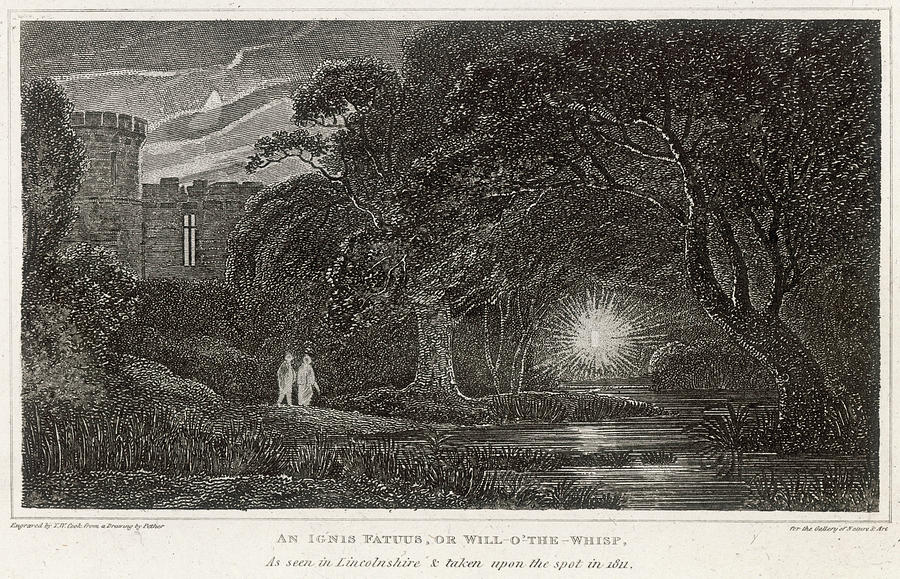
Will-o’-the-whisps are tiny flashes of blue-tinged light that appear above bogs, marshes and swamps. For centuries they were regarded as supernatural — evidence of ghosts and spirits.
Scientists had a more prosaic explanation: Bogs and marshes have a lot of rotting vegetation that produces methane, and the lights were probably just tiny bits of gas bursting into a momentary flame.
But what the heck ignites the flame? That was a mystery.
It may have finally been solved by Richard Zare and his team at the University of California. They’d noticed in previous experiments that droplets of water — tiny as a grain of salt — could build up a surface charge and spontaneously create sparks between two droplets. They called it “microlightning”, which is, as I think all scientifically-minded readers can agree, an exceptionally badass term.
Zare and his colleagues wondered if microlightning could ignite methane. So they shot tiny bubbles of an air-methane mixture into water, and sure enough ...
As the bubbles rose through the water, they changed shape and accumulated charge. When two bubbles met, the difference in charge between them would cause a spark, producing a flash that Zare and his team recorded with both the camera and photon counter.
They also measured the frequencies of light in the flash, and found they matched the signature of specific compounds that had been chemically excited. This suggests the sparks would be powerful enough to trigger the ignition of a gas like methane.
This isn’t proof that a will-o’-the-whisp is caused by microlightning, but it’s very suggestive!
Also, as Kare told New Scientist:
“We continue to discover things about water that, once you understand them, they’re obvious, but before then, they seem completely bizarre,” says Zare. “No one thinks of water related to fire. They think water puts out fire. They’re not telling you with water, I can get a spark and set something on fire. This is new.”
The scientific paper is free to read here, and it includes two very cool videos showing the tiny bursts of microlightning in the liquid.
7) ⌨️ Typewriter art
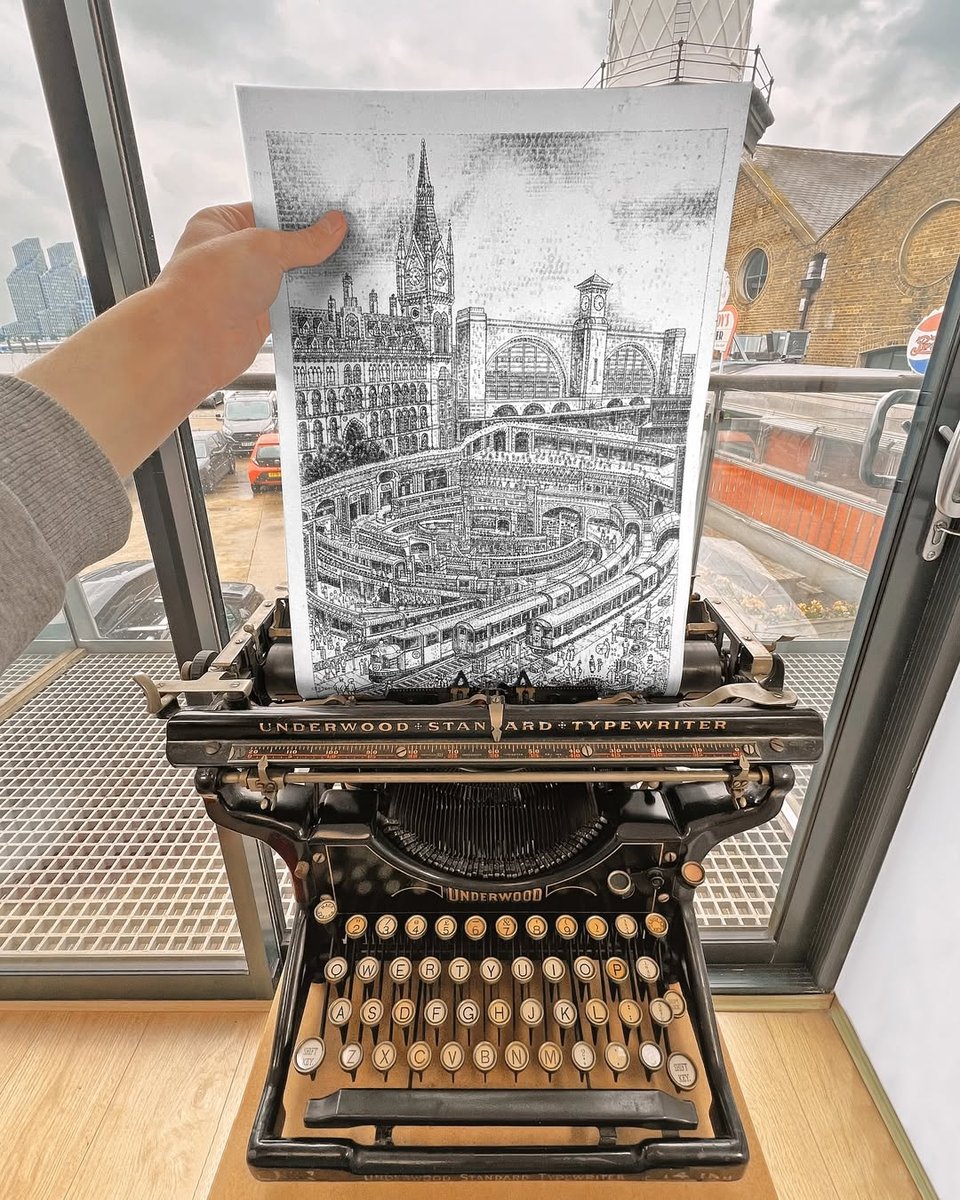
James Cook is an artist whose medium is a manual typewriter: He’ll do a portrait or a landscape by individually pecking out characters that create a complex sort of low-fi ASCII art.
Emma Taggart interviewed him for My Modern Met, and his thoughts on the craft are fascinating, such as …
What challenges did you face when you first started “drawing” with a typewriter?
There’s no undo button, so if you make a mistake, it’s permanent. Undoubtedly, typing portraits of people is the most challenging compared with typing cityscapes. You are trying to capture someone’s likeness, and so one small mistake can spell disaster and all of a sudden, four days of typing goes straight in the bin. Alternatively, it’s much easier to hide your mistakes with detailed cityscapes…in fact, I regularly make mistakes in my artworks, I just try not to point them out to people!
The other challenge of typewriter art is stamina. Typing for hours is physically demanding in a way people might not expect, especially when you’re trying to be precise and intentional with every keystroke. In many ways, typewriter art is my meditation. I find it incredibly relaxing and rhythmic. I think this comes across in my videos on Instagram where people can see the typing process. It certainly has an ASMR quality to it.
He apparently has favorite keys:
I’ve learned which keys are most effective for certain textures. The “@” symbol is brilliant for soft shading when overlapped. Brackets “()” are great for tiny curved forms like the pupils of people's eyes. For brickwork, I often use capital “I” for mortar lines and underscores “_” for the bricks.
Go read the rest of the Q&A, it’s fascinating! Then check out more of Cook’s work via his Instagram feed or his web site, where you can also buy prints.
(Thanks to Laura Camacho for this one!)
8) 🎈 1869 book about experimental balloon travel
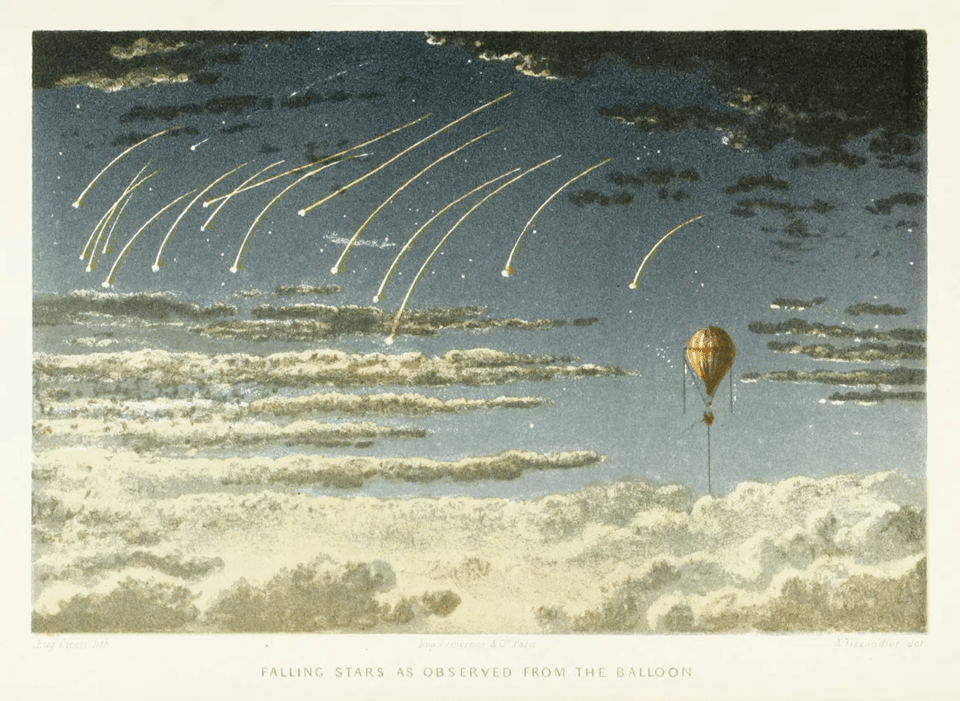
In 1869, the French chemist and meteorologist Gaston Tissandier was on vacation when he came upon a balloon launch. He talked his way onto the trip, and the next day shot 4,000 feet up in the air …
Swept away by the sight of both the ant-like throng of spectators along Calais’ lilliputian shore below and a mirage image of the Calais-Dover ferry and other ships cast upon a cloud above, Tissandier is understandably unnerved that they are on a course not for the English coast as planned, but the open ocean. At 5,200 feet, the pilot notices that the cumulus clouds 2,000 feet below them are flying on a southwest course straight back to Calais, and, after dropping some of their sand ballast, they are soon floating over the Calais jetty — where Tissandier spies his younger brother Albert waving to him.
Balloon travel was so new back then that the folks doing it weren’t really sure how to control the vehicle — they were the first ones in history to explore the upper atmosphere. Tissandier got obsessed and went up again and again, recording his journeys in the book Travels in the Air.
The book was lavishly illustrated with sketches — that’s one above — and The Public Domain Review has a gallery with 39 of them. They’re spellbinding.
The book itself, free to read on the Internet Archive, sounds fascinating too; as Kevin Dann writes …
Every single one of Travels in the Air’s balloon expedition accounts presents this same exhilarating conjunction of chance, contingency, and caprice as the brave but often hapless aeronauts venture cloudward. Editor James Glaisher’s sober, scientific reports contrast with the unbridled Romanticism of his French colleagues’ — Tissandier, Wilfrid de Fonvielle, and Camille Flammarion — but all are united by the absolute novelty of their endeavor. Carried to dizzying heights where these gifted scientific communicators begin to build a picture of Earth’s subtle atmospheric organism, we are most moved by countless carnivalesque moments: coming face-to-face with spiders and butterflies a mile above the ground; a dutiful customs officer suspicious of coastal smuggling demanding the aeronauts’ passports; the discovery that tossing chicken bones from lunch will send the silken bubble further aloft as surely as if they had dropped a sandbag. Everywhere the French balloonists meet the same greeting as they return to earth: “Come down! Come down! Dinner is waiting for you!”
9) 🧭 Quantum navigation

There’s been a rise in GPS jamming and spoofing — techniques that attack a GPS system so that a plane, car or boat gets lost. The aerospace industry is particularly worried, and is hungry for some technological alternative that isn’t as vulnerable to attack.
One candidate? Quantum sensing.
Over at the Wall Street Journal (gift link), Isabelle Bosquette writes about how the technique works …
Inside SandboxAQ’s device, essentially a small black box, a laser fires a photon at an electron, forcing it to absorb that photon. When the laser turns off, that electron goes back to its ground state, and releases the photon. As the photon is released, it gives off a unique signature based on the strength of the Earth’s magnetic field at that particular location.
Every square meter of the world has a unique magnetic signature based on the specific way charged iron particles in the Earth’s molten outer core magnetize the minerals in its crust. SandboxAQ’s device tracks that signature, feeds it into an AI algorithm that runs on a single GPU, compares the signature to existing magnetic signature maps, and returns an exact location.
I’d never heard of this, but it’s incredibly cool.
10) 🎨 Online toys for creating gorgeous math patterns
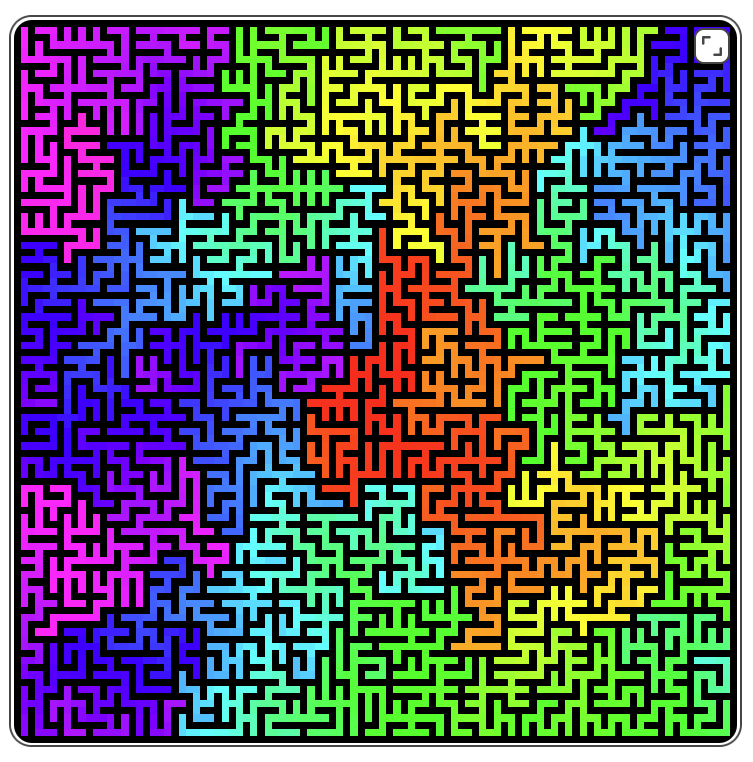
Cruz Godar is a Yale mathematician who has created about three dozen online tools, each of which lets you play with math to draw something gorgeous.
He neatly explains the math at work in each tool. That one above? It generates a random maze using “Wilson’s Algorithm” …
It’s not too hard to describe the algorithm. Draw a square grid of black dots and pick a random one to color white. Now pick another random black dot to start from and color it white too. From this black dot, take a single step in a random direction, coloring the new dot white and drawing a line between the two dots. Now take a single step from that dot, draw another line, and so on. You’ll end up with a white path drawing a squiggle across the grid. There are two things that you need to watch out for: first, if you walk back into your own path, like a failed game of snake, don’t make a loop — instead, backtrack along your path until you’re back at the dot that you were trying to color white for a second time. As you backtrack, turn every white dot you pass back to black, erase all the lines you pass over, and then start again from the new end of the path.
The other thing to watch out for is hitting the single white dot you selected at the very start. When you do, stop drawing your path, pick a new black point, and start again. This time, stop not just when you hit the first white dot, but when you hit any of the white dots along the old path, too. Keep this up until every dot is white, and you’ll have yourself a maze.
A few of my other faves, from amongst these cool math-generators: “Domino Shuffling”, “The Hopf Fibration”, “Kaleidoscope IFS Fractals”, “Double Pendulum Fractal”.
11) 🪵 High-rise buildings made out of wood

Traditionally, high-rise buildings are made out of steel, concrete or brick. But in recent years a new material has emerged: Wood.
More specifically, they’re using “mass timber”, beams made from wood that’s been compressed and is thus powerful as heck. You might think it’s incredibly dangerous (and flammable) to build a high-rise out of wood, but mass timber doesn’t burn like regular wood. Its density means that in a fire, only the outer layer of the timber chars, and the char actually helps prevent the rest of the timber from burning. Steel, on the other hand, melts, and in a fire concrete becomes brittle. Built correctly, a tall high-rise made from wood might be safer in a fire.
Better yet, mass timber has huge environmental upsides — not only do you avoid the massive carbon emissions generated from concrete and steel, but the building is actually a form of carbon sequestration. That’s what wood is, right? Carbon!
Plus, there are psychological upsides: Plenty of studies have found that human’s innate love of nature — our “biophilia”, as I wrote for Wired a few years back — means people are basically more chill in a wood building.
Up in Toronto, George Brown College just erected a new 10-storey academic building made out of mass timber, and as the reporter Alex Bozikovic notes, it’s gorgeous:
The work of the design team delivers a visceral result. All the spruce fills the main rooms with a log-cabin coziness; it even smells good, an agreeable woody tang. The heft of the glue-laminated columns meets fine strips of oak that delicately cover the walls. “It’s like a tree sending out branches,” MTA’s Phil Silverstein says, “the great bulk beside something much smaller.”
Light filters in through wood slats … Along the way up are “breathing rooms” – small social and study spaces with quieter acoustics. Classrooms open to daylight and show just enough wood to remind students that structure and surface can be the same thing. At the top of the building, a shared event space tucks in under the beams of the roof, enjoying views over Toronto and the blue expanse of Lake Ontario.
Wherever possible, the architectural team left the wood of the walls and structure on display. Knots, scars and seams are visible, not concealed – celebrated with washes of gentle light and bursts of candy-coloured furniture. For Ms. Phillips, the timber has a lesson. “There’s so much pressure on young people to be perfect,” she reflects, “and to be surrounded by something like this, it’s got to help you understand the beauty of your uniqueness and the beauty of the so-called imperfections.”
Bonus: The building also has a “solar chimney”, or, a passive cooling/heating system that funnels sun-heated air upwards to warm during the winter and cool during the summer.
Here’s a good video of the building being erected, and here’s a video with a deeper dive into the technical challenges of its construction.
(Thanks to Susan Glickman for pointing out this one!)
12) 🐦⬛ Birds communicate cross-species to warn about cuckoos

Bird species have very different forms of song and bird-calls. They generally don’t communicate across different species. Robins have different forms of song than thrushes or chickadees, and vice versa. Or to put it another way, a robin can’t understand what a thrush or a chickadee is saying.
There’s one weird exception, though: When birds are warning others about cuckoos. In that case, they seem to use a common language that works across species.
Cuckoos, as you probably know, are parasites that lay their eggs in the nest of other birds, to trick them into hatching them. So when birds see a cuckoo arriving in their neighborhood, they warn members of their own species by making a particular sort of whining noise. The other birds hear it and race over to “mob” the cuckoo and chase it away.
Scientists recently analyzed 20 different bird species, and found that different species whine in very similar ways. That made them wonder: Is the whine so similar that species A could recognize the whine of species B?
They tested it by going into an area of yellow warblers and playing the “whine” of a super fairy-wren. Sure enough, the yellow warblers understood the whine, even though it came from a different species — and a ton of yellow warblers showed up to create a mob.
As the researchers told New Scientist …
“This indicates that the function of this vocalisation is to facilitate a communication across species rather than just within,” says Feeney.
And, even wilder, this suggests a potential step towards a human-style language — in birds:
Charles Darwin speculated in his 1871 book The Descent of Man the origins of spoken language might be traceable to the imitation and modification of instinctive sounds that humans and other animals produce. Examples of these might be a squeak if you are scared or a scream made in response to pain. “The birds adapting these innate calls to another purpose could be the first stepping stone towards language,” says Feeney.
The full paper is here, but alas, it’s paywalled.
13) 📚 Archive of impermanence
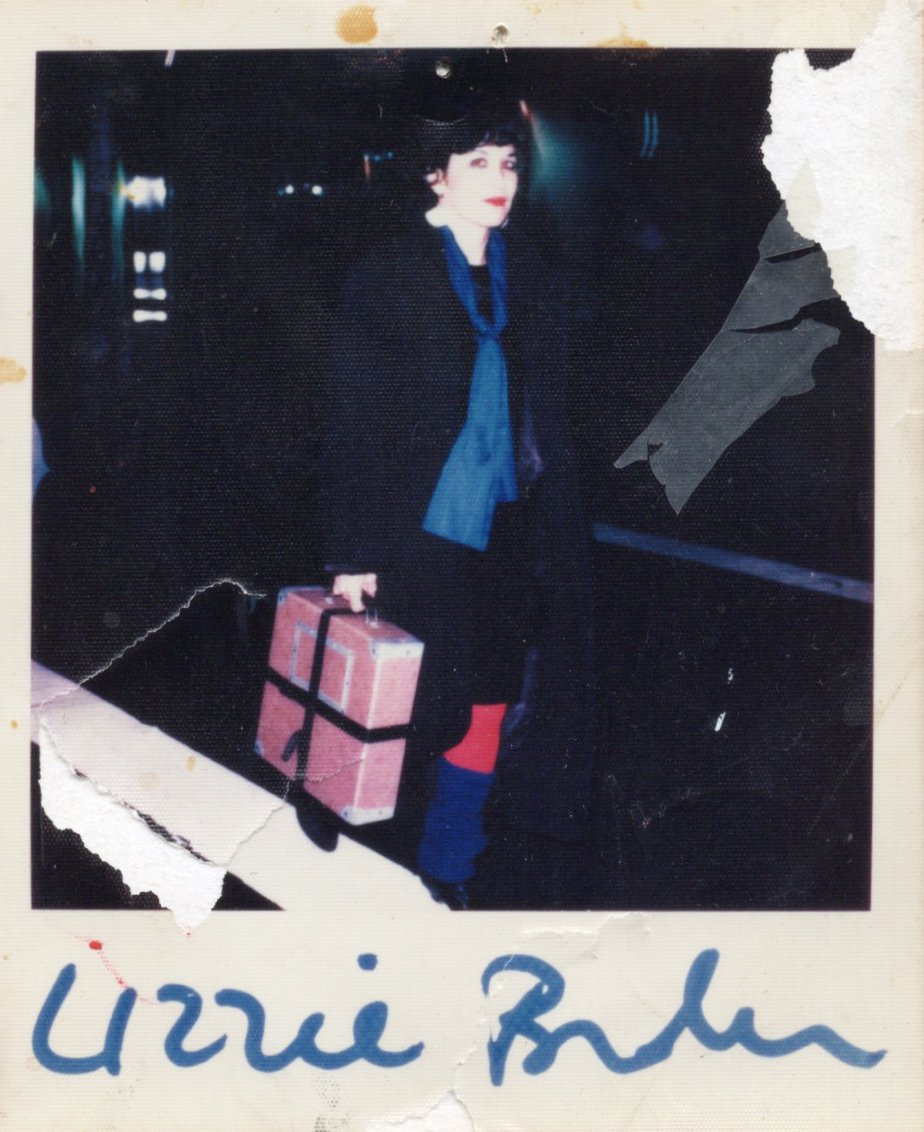
I dig Rebekah Weikel’s new project “Interlude Docs” — which is an archive of documents from artists, that all in some way reflect the theme of “impermanence”.
It’s a fascinating mix of photos, scanned letters, audio files, and more. Above is a Polaroid of filmmaker Lizzie Borden, of which she writes …
I don’t remember who took this Polaroid or if I was there when it was taken—sometime in the late 70s. I realized only years later it had been the inspiration for a sequence in Born In Flames, shot in a loft in the Mudd Club building with moody red lighting of women from the “Women’s Army” dancing, lounging, sharing a blunt—a wishful Utopian escape from their activist days. Only a few frames of that sequence remain in the film. These days, the Nan that I see in this Polaroid is a sleeping princess about to wake up, pick up her sword, and slay Purdue Pharma and the Sackler family.
I poked around in the archive and found all manner of fascinating stuff, like a letter listing the “feelings & hallucinations” Tom Recchion experienced while on mushrooms in 1976; the receipts from dozens of video rentals by John Weise; a scan of a poem edit by Gerald Malanga; a collection of dreidels by Sarah Schulman; a tender letter to Joe Mama-Nitzberg; “My long dead mother’s cake topper collection” (Amy Gerstler); and a sixteen-second audio recording of musicians realizing they had failed to record a 20-minute jam session. (They pressed “record” at the very end, thinking it had already been recording the session and they had pressed “stop”.)
There’s a nicely paradoxical aspect in creating an archive of impermanence online, since the Internet is amazing for archival work (infinite space to store documents! collect nearly any form of multimedia!), but has its own impermanence too: Linkrot, service shutdowns, failed migrations. Paper documents degrade slowly, their contents very gradually fading from view; hard drives, in contrast, offer up pristine, note-perfect copies … until the moment they abruptly fail, and everything winks instantly out of existence.
14) 💦 Massive amounts of freshwater lie beneath the ocean floor
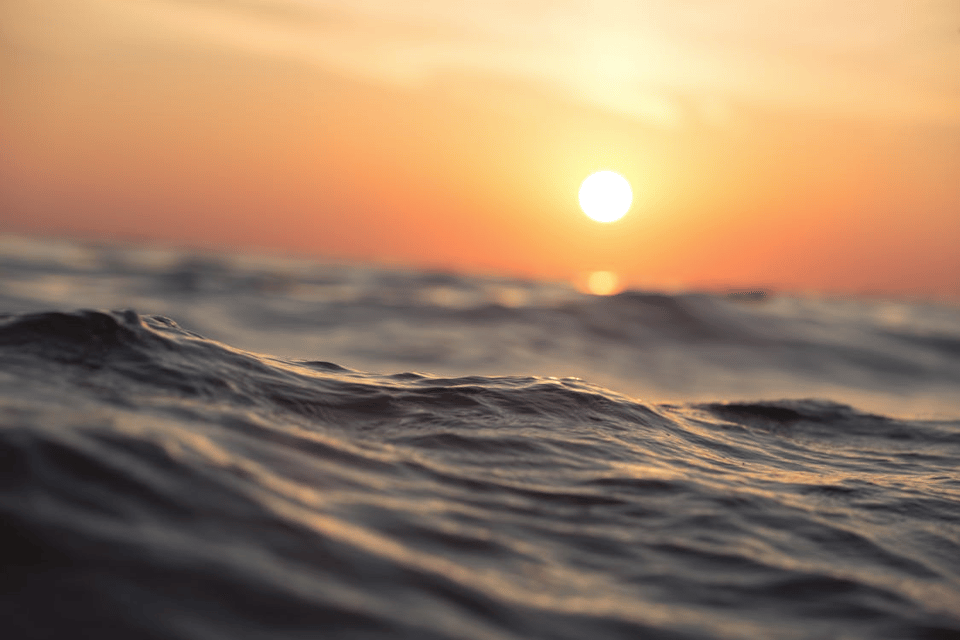
I always cracked up at the kooky, spoken-word bridge to the Talking Heads’ song “Once In A Lifetime”: There is water at the bottom of the ocean. I mean, yeah, dude, of course there is; it’s an ocean, lol.
Except, wait a minute! Now oceanographers are discovering something intriguing. If you go to the seabed and drill downwards, you can find massive aquifers of freshwater.
There’s a terrific story about it by a team of AP writers. Apparently American drill teams back in 1976 first discovered fresh water while doing seabed drilling, and recently a whole scientific expedition went back out into the Atlantic offshore from Nantucket to see what they could find:
Soon after Robert arrived at the first of three drilling sites May 19, samples drawn from below the seabed registered salinity of just 4 parts per thousand. That’s far below the oceans’ average salt content of 35 parts per thousand but still too briny to meet the U.S. freshwater standard of under 1 part per thousand.
“Four parts per thousand was a eureka moment,” Dugan said, because the finding suggested that the water must have been connected to a terrestrial system in the past, or still is.
As the weeks wore on and Robert moved from site to site 20 to 30 miles (30 to 50 kilometers) off the coast, the process of drilling into the waterlogged subsea sediment yielded a collection of samples down to 1 part per thousand salt content. Some were even lower.
Bingo. That’s what you find in many bodies of fresh water on land. That’s water you can drink, in theory.
There’s potentially a massive amount just in this one area, enough to — as the writers note — “meet the needs of a metropolis the size of New York City for 800 years”.
Is this usable water? It isn’t that simple, because it’s not clear where the freshwater is coming from. If it’s originally produced by rainfall, that means the freshwater originated on land before migrating out far beneath the ocean. In the case, if you hoovered it up out from those sub-ocean wells, you might accidentally deplete the terrestrial aquifers that are feeding it. With water — as we are discovering with the voracious clean-water demands of data centers — there’s no free lunch.
But on a purely scientific basis, it’s damn interesting.
15) 🥇 A final, sudden-death round of reading material
3D QR codes. 🥇 Hector, the cloud. 🥇 “Motion tracking of a fish as a novel way of controlling electronic-music performance”. 🥇 Octopuses prefer certain arms for certain tasks. 🥇 Suspicious-URL generator. 🥇 Why math professors prefer chalk and chalkboards. 🥇 Circular computers. 🥇 Ipod clickwheel games, preserved for posterity. 🥇 DIY wasp-removal system. 🥇 Behold the “grue jay”. 🥇 Gorgeous “floating concrete” building. 🥇 Glicol, a live-music-coding language written in Rust. 🥇 Stained-glass turtle lamp. 🥇 The Ikea pencil is the world’s most stolen object. 🥇 Server hosted on a vape pen. 🥇 The music artist with the most, and least, complex lyrics. 🥇 The first successful “behavior transplant”. 🥇 Gosper Curve fractal marble run. 🥇 Prehistorical camel art pointed to desert water sources. 🥇 A list of all the reasons Bruce Banner turned into the Hulk during the TV show. 🥇 Visual archive of Byte magazine. 🥇 All-terrain exoquad. 🥇 Why thousands of fruit flies keep landing on north-sea oil rigs. 🥇 How many people have ever lived? 🥇 A bullet crashed the Internet in Texas. 🥇 “I Will Strangle A Horse”, the text-adventure game. 🥇 Swatch’s tariff-branded wristwatch. 🥇 3D-printable rotating storage box. 🥇 Behold the 1985 Pulse Autocycle. 🥇 8-key vibe-coding keyboard. 🥇 Photographing the speed of light. 🥇 “Deadstock” phones. 🥇 The secret apartment atop the Eiffel Tower. 🥇 The time picker in iOS isn’t circular. 🥇 A deaf quarterback invented the huddle. 🥇 We’ve been measuring mountains wrong. 🥇 Mongolian LLM. 🥇 Badminton in space.
CODA ON SOURCING: I read a ton of blogs and sites every day to find this material. A few I relied on this week include Strange Company, Link Machine Go, Hackaday, Messy Nessy, Numlock News, the Awesomer, the Morning News, and Mathew Ingram’s “When The Going Gets Weird”; check ‘em out!